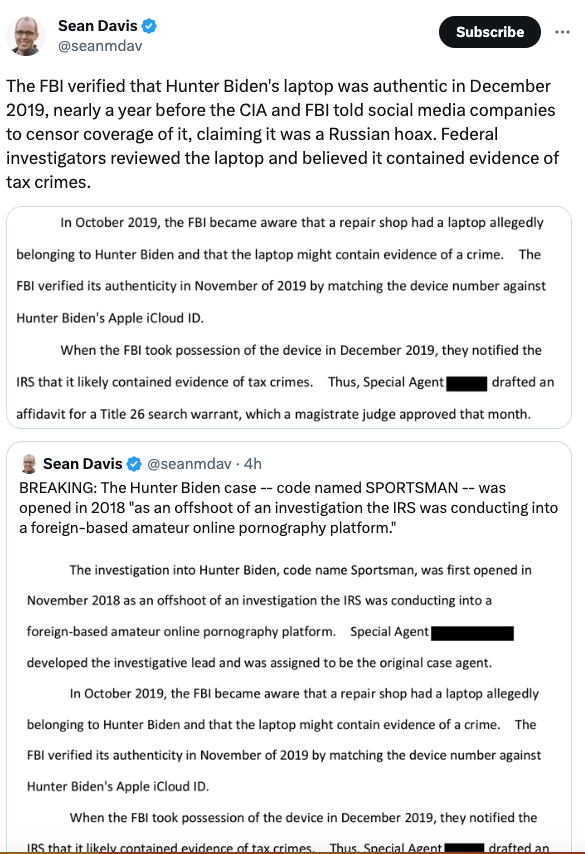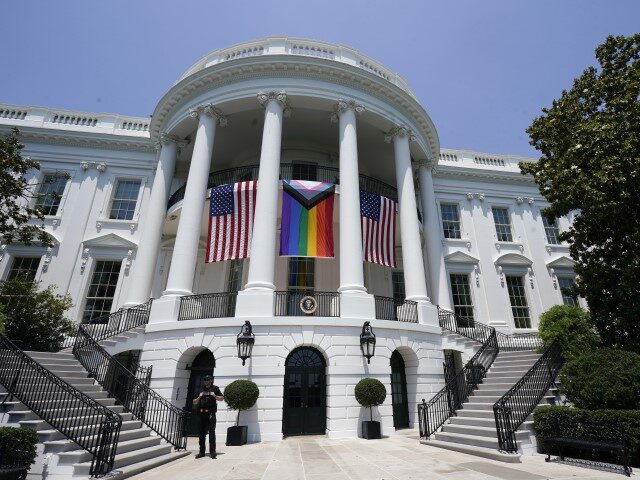(this is long and complicated but keep going…)
FNC: The House Ways and Means Committee on Thursday released testimony from two IRS whistleblowers who said the Justice Department, FBI and IRS interfered with the investigation of the tax evasion case against Hunter Biden.
According to Committee Chairman Jason Smith, R-Mo., that testimony “outlines misconduct and government abuse at the Internal Revenue Service (IRS) and the Federal Bureau of Investigation (FBI) in the investigation of Hunter Biden.”
“The allegations point to a steady campaign of: unequal treatment of enforcing tax law; Department of Justice interference in the form of delays, divulgences, and denials, into the investigation of tax crimes that may have been committed by the President’s son; and finally, retaliation against IRS employees who blew the whistle on the misconduct,” the committee said Thursday.
“Whistleblowers describe how the Biden Justice Department intervened and overstepped in a campaign to protect the son of Joe Biden by delaying, divulging, and denying an ongoing investigation into Hunter Biden’s alleged tax crimes,” Smith said.
According to testimony released by the committee, one whistleblower, IRS Criminal Supervisory Special Agent Gary Shapley Jr., said decisions in the case seemed to be “influenced by politics.”
“Whatever the motivations, at every stage decisions were made that had the effect of benefiting the subject of the investigation,” Shapley said.
“These decisions included slow-walking investigative steps, now allowing enforcement actions to be executed, limiting investigators’ line of questioning for witnesses, misleading investigators on charging authority, delaying any and all actions months before elections to ensure the investigation did not go overt well before policy memorandum mandated the pause. These are just only a few examples,” he added.
Shapley, who oversaw the IRS probe into the president’s son, said the IRS obtained a WhatsApp message dated July 30th, 2017, from Hunter Biden to Henry Zhao, who the New York Post previously reported is a Chinese Communist Party official and CEO of Harvest Fund Management.
“I am sitting here with my father and we would like to understand why the commitment made has not been fulfilled. Tell the director that I would like to resolve this now before it gets out of hand, and now means tonight” Biden wrote. “And, Z, if I get a call or text from anyone involved in this other than you, Zhang, or the chairman, I will make certain that between the man sitting next to me and every person he knows and my ability to forever hold a grudge that you will regret not following my direction. I am sitting here waiting for the call with my father.”
Shapley testified that communications like that message “made it clear we needed to search the guest house at the Bidens’ Delaware residence where Hunter Biden stayed for a time.”
However, Shapley testified that Assistant United States Attorney in Delaware, Lesley Wolf, told him “optics were a driving factor in the decision on whether to execute a search warrant.” Read more here.
There is also the New York Post item that includes:
*The first son was given the code name “Sportsman” by investigators.
*Delaware US Attorney David Weiss sought to bring federal charges against Hunter, 53, in the Central District of California and in Washington, DC, last year and was denied both times by Biden-appointed US attorneys Martin Estrada and Matthew Graves, respectively.
*According to the second whistleblower, who has remained anonymous, the investigation covered the years 2014 through 2019, during which Hunter and his “associates” received approximately $17.3 million from Ukraine, Romania and China — with the first son alone scooping $8.3 million. Keep reading here.
But how about a storage unit?
BREAKING: According to IRS whistleblowers, DOJ tipped off Hunter Biden about a search of his storage unit, prohibited investigators from executing a warrant on Joe Biden’s guest house, and repeatedly prohibited charges from being brought against Hunter Biden.… pic.twitter.com/9j7H8BkqEe
— Sean Davis (@seanmdav) June 22, 2023
Hey Merrick Garland, the American people are holding on line 3 asking why you lied…

 .Satellite imagery of Ream Naval Base from 5 February 2023, annotated to show the shape of the pier extension. Original image courtesy of BlackSky
.Satellite imagery of Ream Naval Base from 5 February 2023, annotated to show the shape of the pier extension. Original image courtesy of BlackSky



